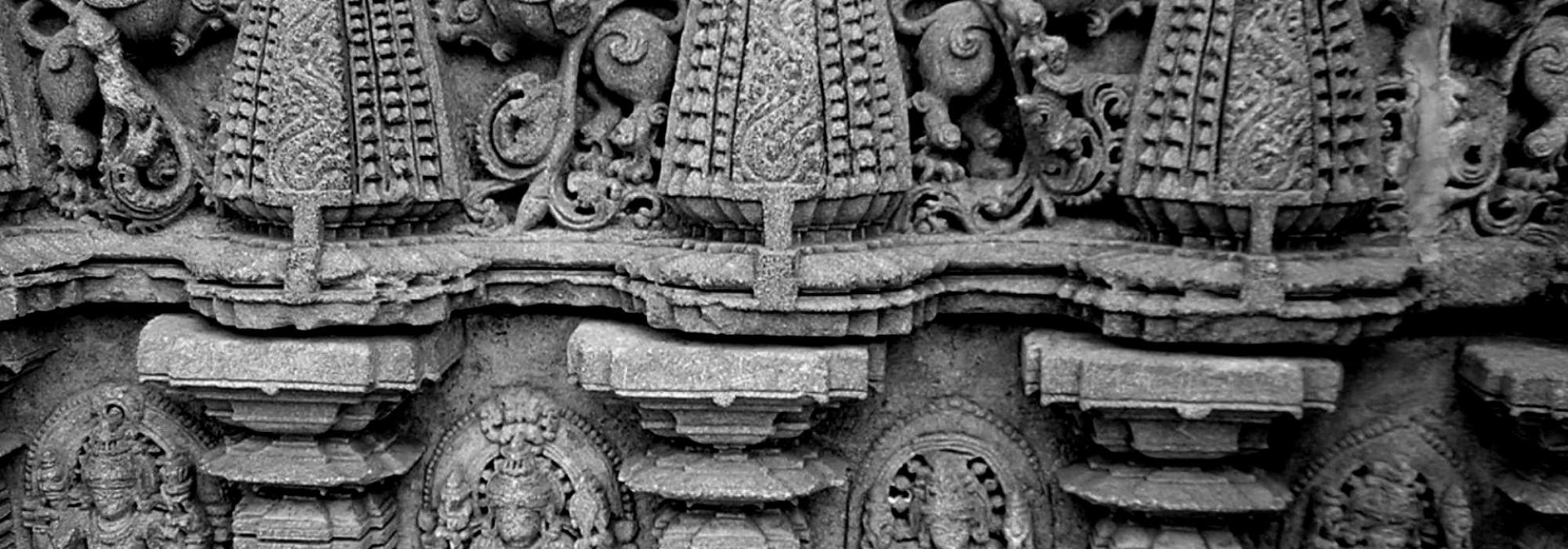Krishna speaks about bhakti so often in the Gita. He goes as far as to say – sincerely worship the supreme in any form you like; I will strengthen that faith (BG 7.21). But what of Krishna himself? Is he a devotee? Or is he an arrogant god?
He is devoted to his parents, elders, teachers, and seers. For example, during the rajasuya yajna performed by Yudhisthira, Krishna washes the feet of all the sages (MB 2.30-32) – he is endowed with true humility, a trait that he lauds in the Gita (BG 6.47). But what about his devotion to other deities? In the Anushasana Parva, Bhishma tells Yudhishtira about the story of the sage Upmanyu who learnt the Shivasahasranama (thousand names of Shiva) from Krishna, to whom the mantra was first revealed (MB 13.14-17). In the Bhagavata Purana, there is a story of Krishna praying to Shiva and performing penance in order to get a good son (BP 10.88). During the peace mission in the Mahabharata, Krishna says, “I can do my best as a human being, but the rest is left to Him” (MB 5.77.4-5).
There is a notion that Krishna was against Indra and the lifting of the Govardhana mountain is cited as testimony (BP 10.24-27). There are many instances to show that Krishna doesn’t disrespect Indra. For example, Krishna is a great supporter of yajnas, and in a yajna, typically Indra gets the lion’s share (प्रयाज) of the worship. In the Gita, he says, “Among the devas, I am Indra!” (BG 10.22). Further, Krishna’s best friend is Arjuna, who is the son of Indra. Basically the episode from the Bhagavata speaks about Krishna opposing the ostentatious worship of Indra. He doesn’t oppose the worship itself, but rather argues against the pomp and luxury. It is not uncommon for festivals to start off with an idea of bringing people together but over years metamorphosing into something unnecessarily grandiose.
In the twelfth chapter of the Gita, Krishna discusses the traits of a भक्त (devotee) but in essence he is describing the traits of a ज्ञानि (wise person). This is in itself an affirmation that भक्ति (devotion) and ज्ञान (wisdom) are pretty much the same. While a ज्ञानि might approach it intellectually, a भक्त approaches it intuitively, which is why we see such concordance in the words of a jnani like Shankara and a bhakta like Tukaram. Traits like विवेक (sagacity) and निस्स्वार्थ (selflessness) are the building blocks for all – be it a jnani or a bhakta.
Krishna was both a jnani and a bhakta. He lives by what he said in BG 12.13. He says that a devotee is one “who hates none and is friendly and compassionate to all” and that is how he lived his life. Even to the hunter who finally killed him, he showed compassion and gave solace. He was not enraged about the fact that he was shot and that he was going to die. Then he says that a devotee is “free from attachments and arrogance” and he has always displayed a sense of selflessness in his own actions. Finally he says that a devotee is “balanced in pain and pleasure; endowed with forgiveness.” We see his forgiveness during the rajasuya yajna when he is the recipient of the first honours (अग्रपूजा). When Shishupala hurls accusation after accusation, Krishna remains silent, smiling, and unruffled even as all the others hurl back expletives at Shishupala. Only after the hundredth accusation does he finally kill him (MB 2.33-42). This also reminds us of another verse from the Gita where he says that a devotee is “same in the face of praise or criticism; a silent observer” (BG 12.19).
To be continued...
















































